A Perfect Cloud by Francisco Negroni.
Photo location: Pucon, ChileNope.
Thats not a photo of Mount Doom.
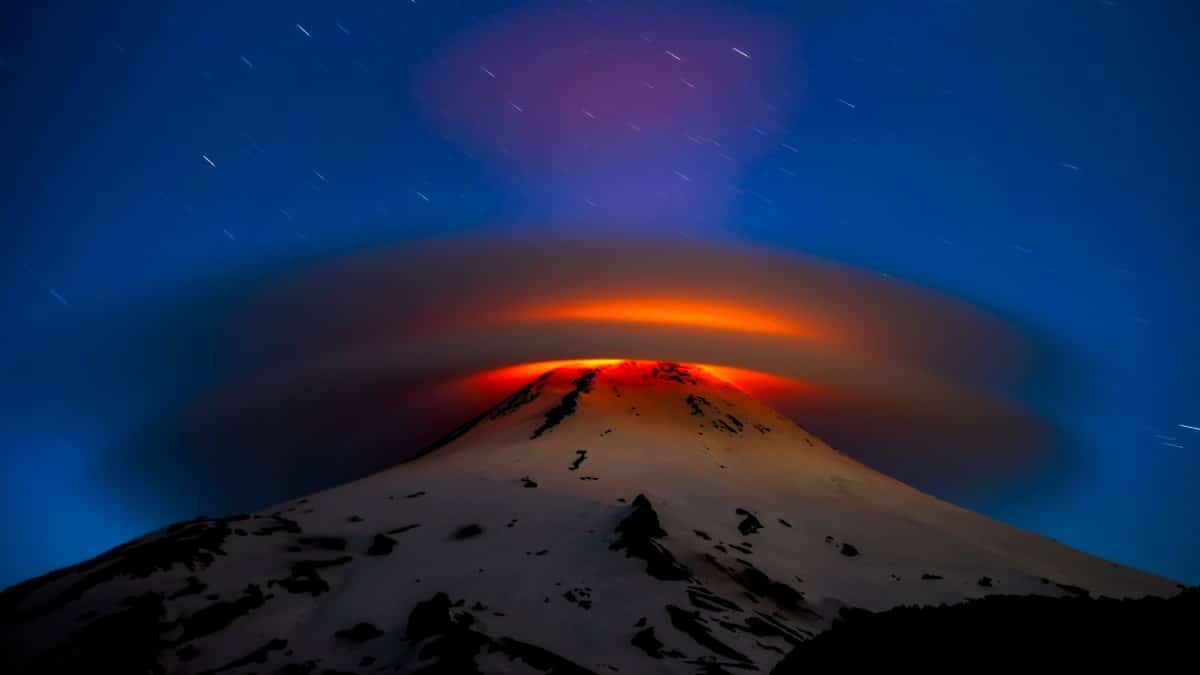
“A Perfect Cloud” by Francisco Negroni. Overall winner. Photo location: Pucón, Chile“Nope. That’s not a photo of Mount Doom. This is a gigantic lenticular cloud surrounding the crater of the Villarrica volcano, while the lava illuminates the cloud from within. Francisco Negroni camped out at the volcano—one of Chile’s most active—for ten days to capture this special moment, during a period of intense volcanic activity.”
Chilean photographerFrancisco Negronihas been named theStandard Chartered Weather Photographer of the Year.
Negroni can add the award to his impressive resume, which is filled with prizes from international photo contests.
In addition to the overall winners, the contest also revealed the winner of the public vote.
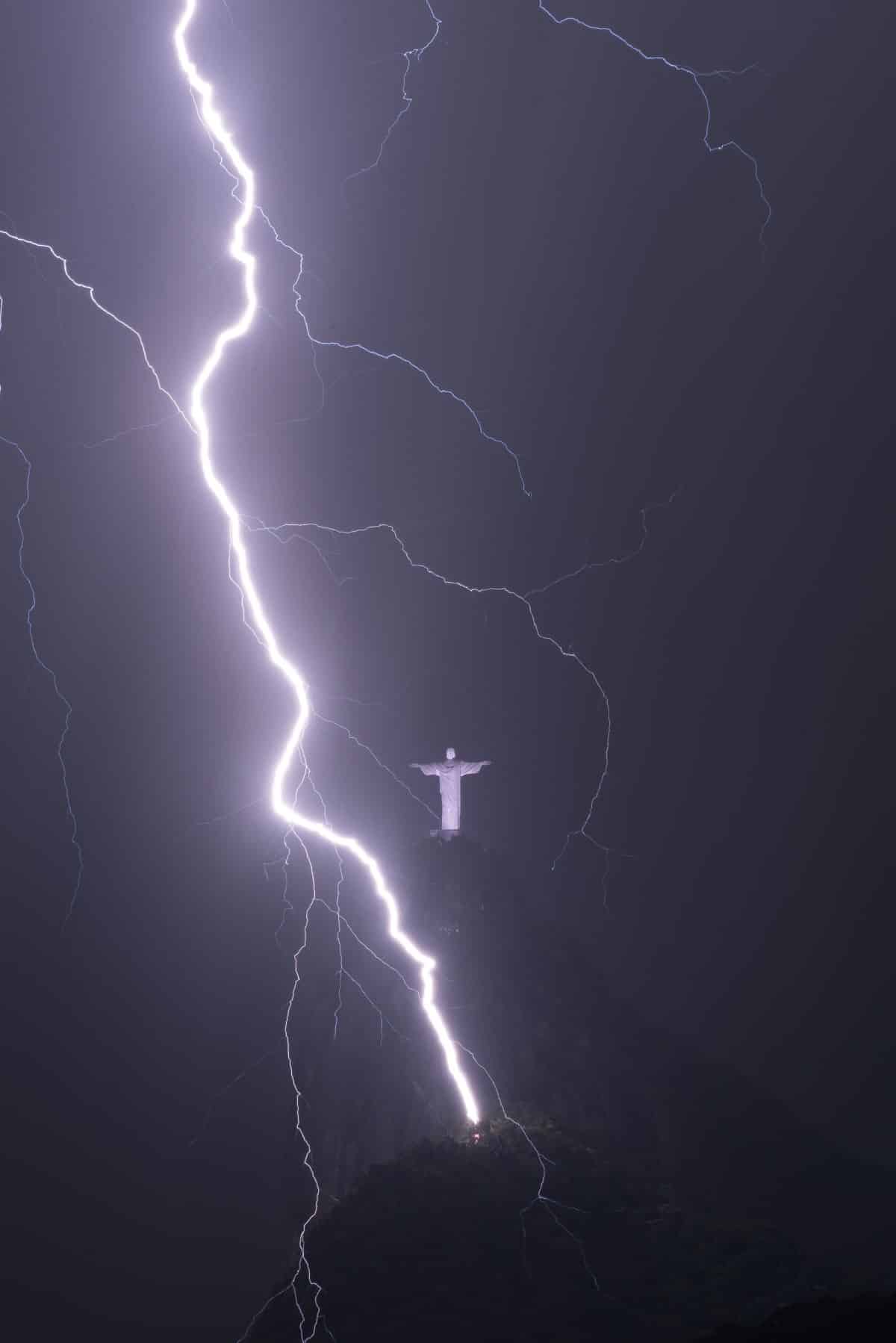
“Divine Power” by Fernando Braga. Winner (Public vote). Photo location: Flamengo neighborhood, Rio de Janeiro, Brazil“When you see photographs like this, it’s easy to understand why our ancestors reckoned thunder and lightning were signs of angry deities. This photo captures bolts of lightning surrounding the world-famous statue of Christ the Redeemer in Rio de Janeiro, Brazil. Photographer Fernando Braga used every opportunity he could get to achieve this result taking advantage of storm forecasts and capturing a series of long exposures to maximize the chances of capturing lightning framing the statue. ‘This night was simply unforgettable for me. Like a dream come true.' Lightning strikes when electric charge builds up in a storm, creating sudden discharges either between parts of the atmosphere, or between the atmosphere and the Earth’s surface. Fernando framed the shot to include ground-based antennas since lightning often strikes tall electrical conductors like these. Lightning can cause major destruction damaging property and triggering fires. And climate change is expected to make lightning more common across the world, by creating a hotter atmosphere that holds more water vapor, and so can produce more frequent and intense thunderstorms.”
The awards, which are run by the Royal Meteorological Society, also honor young photographers.
This year, 17-year-old Jamie McBean was named Young Weather Photographer of the Year.
Irwig’s beautifully balanced composition is a clear winner.
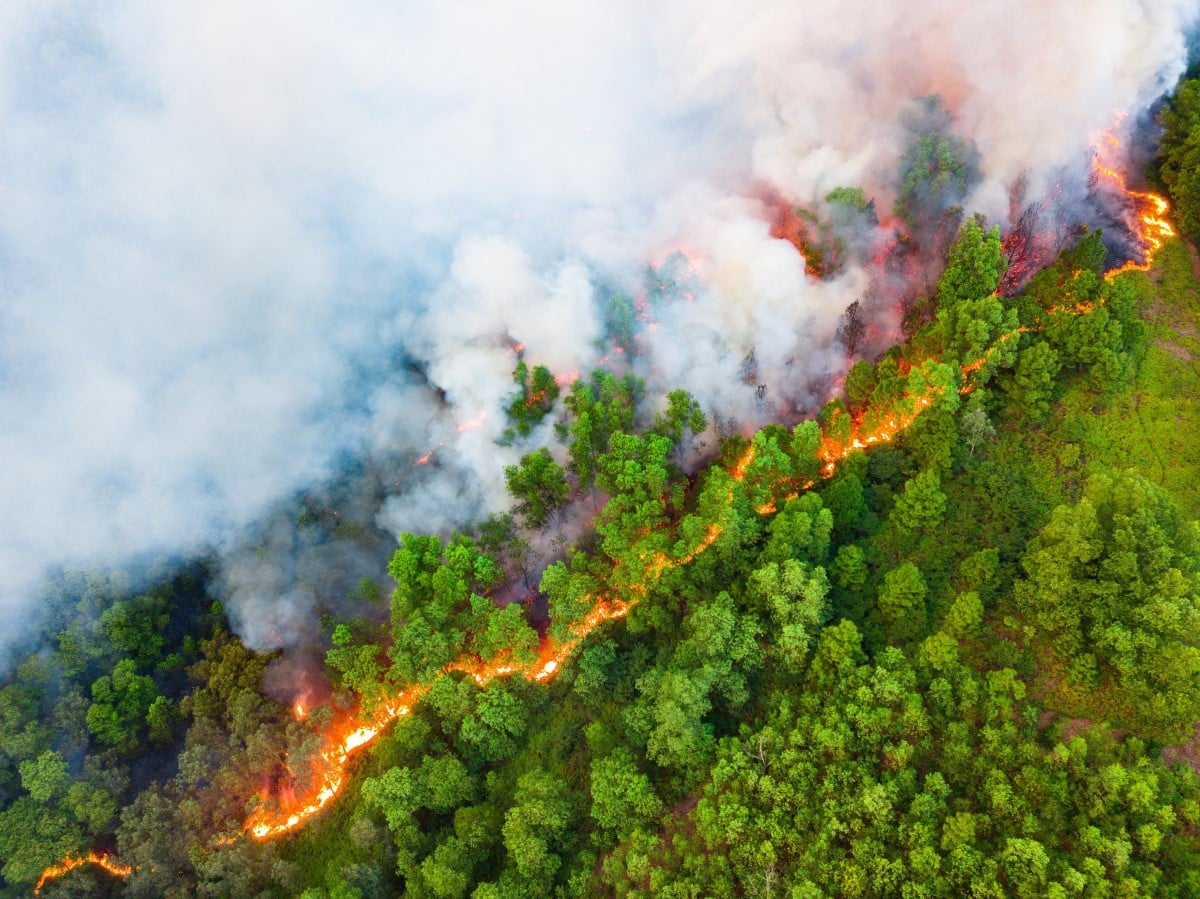
“Forest Fire Boundary” by Tran Tuan. Runner-up (Second Place). Photo location: Bac Giang province, Vietnam“This scorching snap captures the devastation that forest fires cause to the natural world. Photographer, Tran Tuan, used a drone to reveal a forest split in two: one side ablaze, the other still lush with life… for now. Tran took this photo in the Bac Giang province of Vietnam, but forest fires like this one are devastating every corner of the globe (except for Antarctica). While wildfires are often sparked by human activity or lightning strikes, climate change is pouring fuel on the fire, by creating hotter—and in many regions—drier conditions, and more combustible material. This has been linked with fires that can burn longer, and spread further.”
Check out all the winners and runner-ups below.
They’ll have you looking at the weather in a whole new light.
Here are the winners of the 2023 Standard Chartered Weather Photographer of the Year contest.
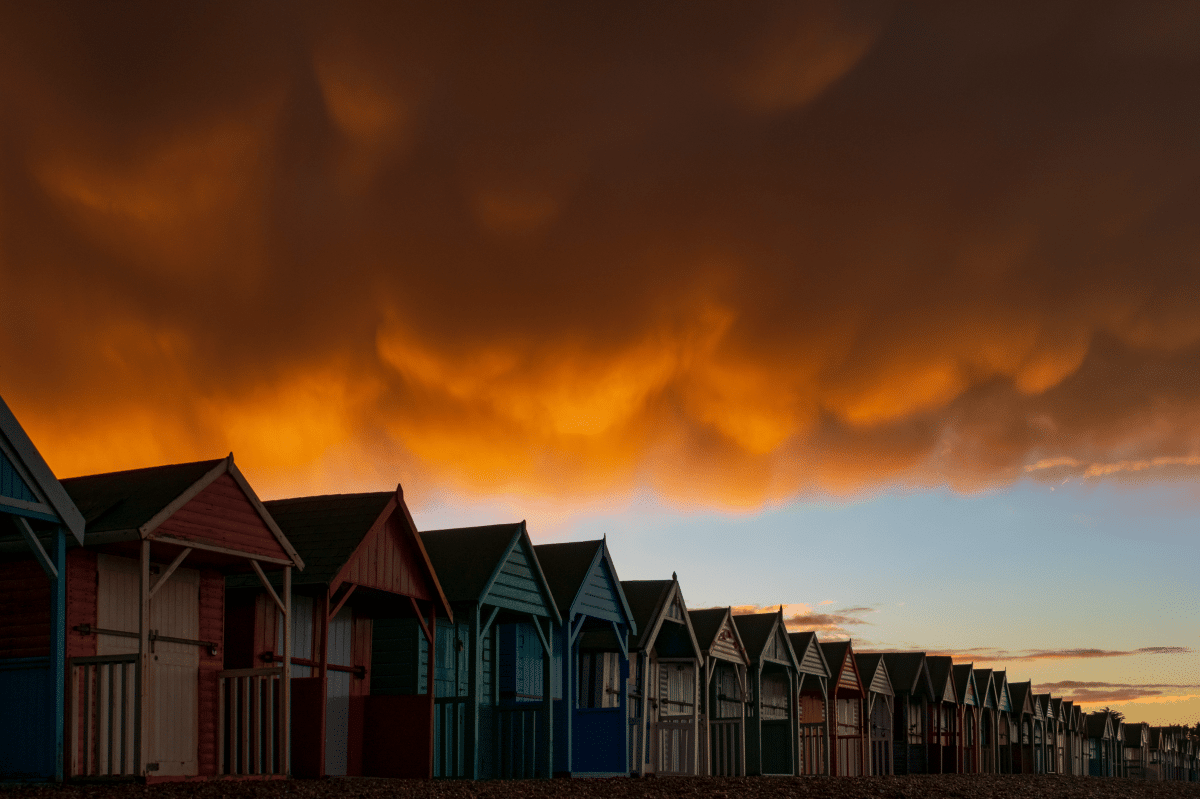
“Overhead Mammatus over Beach Huts at Herne Bay” by Jamie McBean. Overall winner (Young). Photo location: Herne Bay, Kent, UK“This dramatic photo of these bulbous Mammatus clouds was captured by 17-year-old photographer, Jamie McBean. As Jamie explained, ‘A thunderstorm made way for an amazing overhead Mammatus display that caught the setting sun and gave them a golden glow.' Mammatus clouds are some of the most unusual and distinctive clouds and are usually connected with large cumulonimbus storm clouds that form as warm, moist air rises in the lower atmosphere. The bulges emerge from the base of the cumulonimbus and form due to turbulence within these giant storm clouds. The name Mammatus comes from their peculiar shape; the Latin ‘mamma' translates to ‘udder' or ‘breast.' In this photo, the clouds’ bumpy structure is dramatically highlighted by the evening sunlight.”
Divine Power by Fernando Braga.
Winner (Public vote).
This night was simply unforgettable for me.
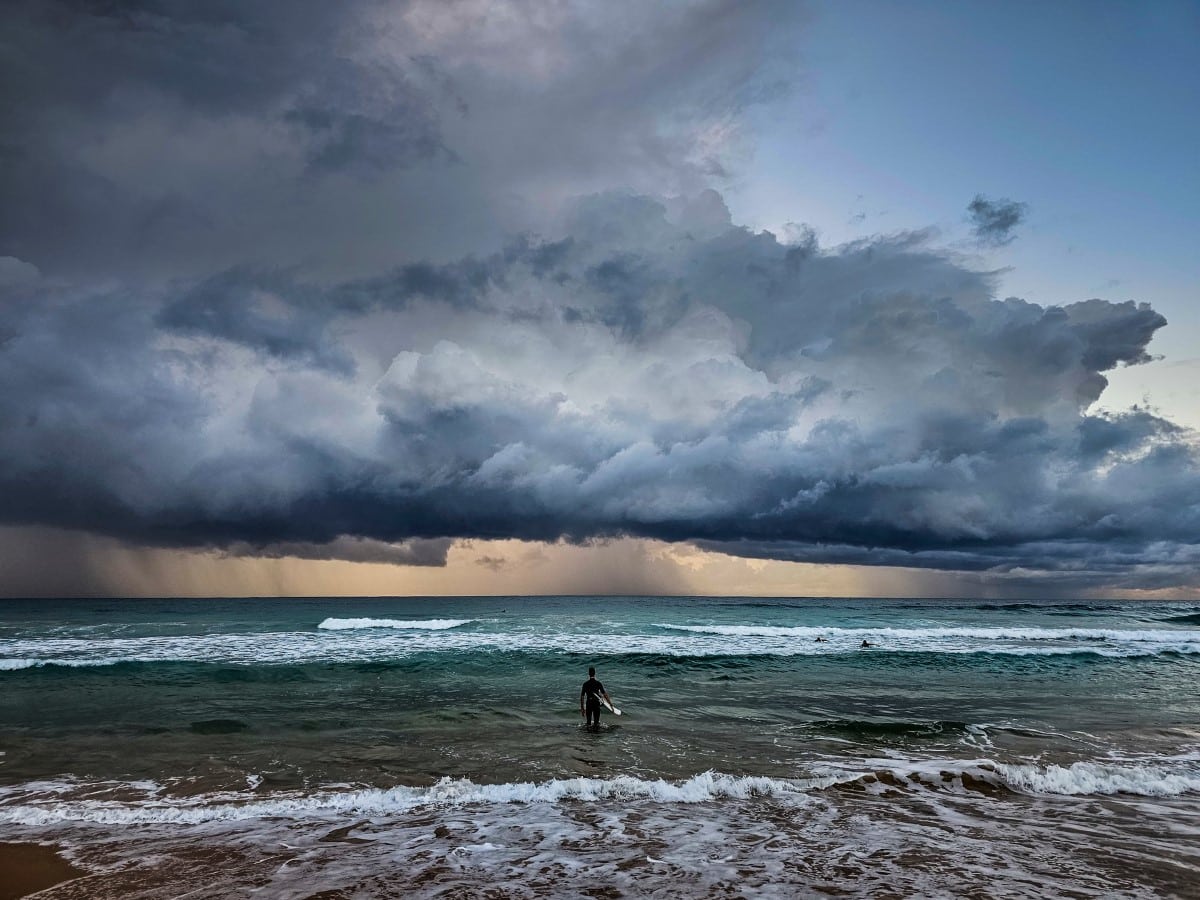
“Braving the Storm” by Lez Irwig. Overall mobile winner. Photo location: Sydney, Australia“Would you surf a scene like this? Photographer Les Irwig captured a surfer’s contemplation of brooding weather conditions on one of Australia’s beaches in Sydney. ‘One wonders what was on his mind as he stands in readiness.' The early morning light of the sunrise illuminates heavy convective clouds, as they rain off in the distance. Sunrises have such warm hues, since the sun’s rays travel a long distance through the atmosphere, and the bluer frequencies of light get scattered away en route, through “Rayleigh scattering.” Convective clouds form as warm, moist air rises in the lower atmosphere. And they’re not just dramatic to look at. These clouds are associated with heavy downpours and lightning. Perhaps that explains why the surfer seems so pensive!”
Like a dream come true.'
Fernando framed the shot to include ground-based antennas since lightning often strikes tall electrical conductors like these.
Lightning can cause major destruction damaging property and triggering fires.

“Fichtelberg Mountain” by Christoph Schaarschmidt. Runner-up (Third Place) Photo location: On the Fichtelberg in Saxony, Germany.“A number of factors conspired together to sculpt this scene: strong winds; over a meter of snow; and temperatures far below zero. The icy build up in the landscape is actually a combination of snow and rime—ice that forms when supercooled water droplets in a fog freeze onto a surface. Also essential to this landscape was the clear view—unusual on this mountain, which is often covered in a thick fog—and the Fichtelberg meteorological station, which sits at an altitude of 1214 meters and has been measuring the weather since 1916.”
Forest Fire Boundary by Tran Tuan.
Runner-up (Second Place).
This has been linked with fires that can burn longer, and spread further.
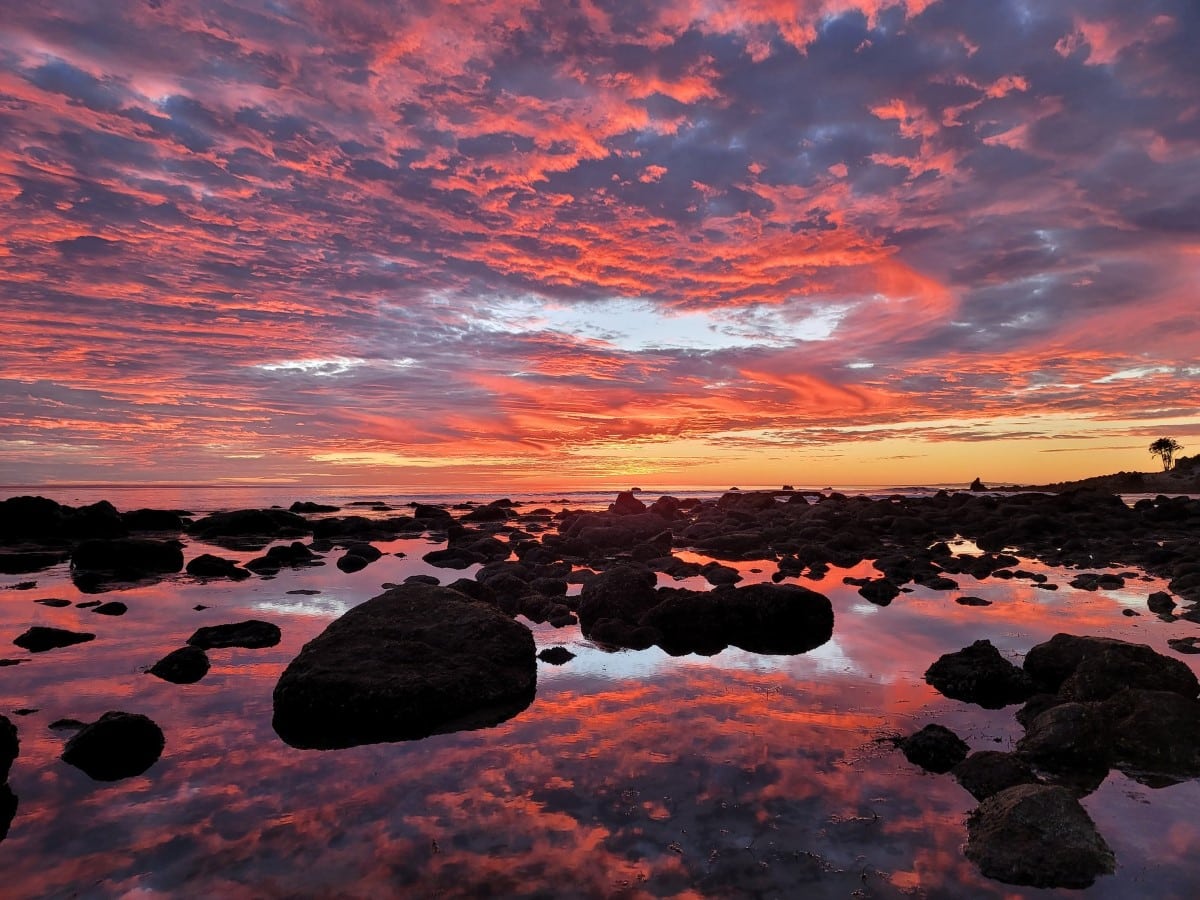
“Reflections Over the Pacific Ocean” by Siyana Lapinsky. Runner-up (Young) Photo location: Malibu, California, USA“What’s better than a beautiful sunset? Two, of course! 14-year-old photographer, Siyana Lapinsky, captured the evening light near home in Malibu, California. When the sun is close to the horizon, its rays need to travel long distances through the atmosphere. Thanks to Rayleigh scattering, blue light is scattered more strongly and tends to be deflected away in other directions leaving more yellow, orange, and red light for us to see. Salt particles in the air can make sunsets over the sea even more colorful. The more moisture and dust in the air, the more scattering takes place, leaving us with beautiful pink colors as shown in Siyana’s photo. What’s more, the low angle of the light from the sun illuminates these clouds from below, creating an even more magical moment.”
Overhead Mammatus over Beach Huts at Herne Bay by Jamie McBean.
Overall winner (Young).
The bulges emerge from the base of the cumulonimbus and form due to turbulence within these giant storm clouds.

“Snowflake Fall” by Diana Neves. Runner-up (Mobile) Photo location: Staffordshire, UK.“Diana Neves captured the fragile beauty of a snowflake while enjoying a walk with her partner in Staffordshire in the UK. While each snowflake is unique, this one also holds a special significance for Diana: ‘I was recovering from depression at the time, and the snowflake reminded me to look for happiness in everything you see.'”
In this photo, the clouds bumpy structure is dramatically highlighted by the evening sunlight.
Braving the Storm by Lez Irwig.
Photo location: Sydney, AustraliaWould you surf a scene like this?
Photographer Les Irwig captured a surfers contemplation of brooding weather conditions on one of Australias beaches in Sydney.
One wonders what was on his mind as he stands in readiness.'
The early morning light of the sunrise illuminates heavy convective clouds, as they rain off in the distance.
Convective clouds form as warm, moist air rises in the lower atmosphere.
And theyre not just dramatic to look at.
These clouds are associated with heavy downpours and lightning.
Perhaps that explains why the surfer seems so pensive!
Fichtelberg Mountain by Christoph Schaarschmidt.
Reflections Over the Pacific Ocean by Siyana Lapinsky.
Runner-up (Young) Photo location: Malibu, California, USAWhats better than a beautiful sunset?
Two, of course!
14-year-old photographer, Siyana Lapinsky, captured the evening light near home in Malibu, California.
When the sun is close to the horizon, its rays need to travel long distances through the atmosphere.
Salt particles in the air can make sunsets over the sea even more colorful.
Snowflake Fall by Diana Neves.